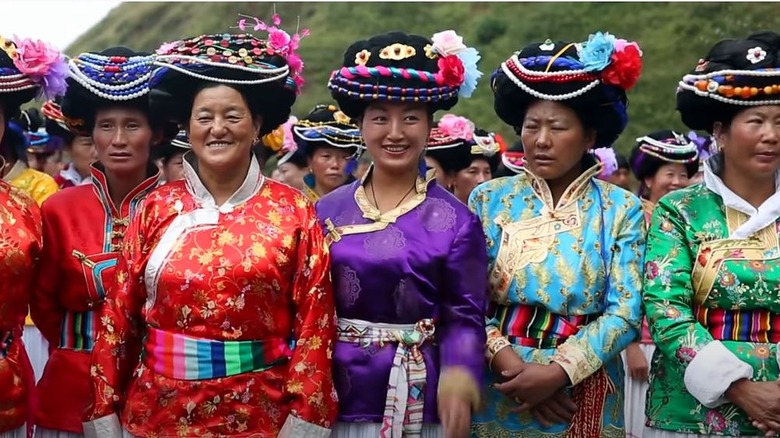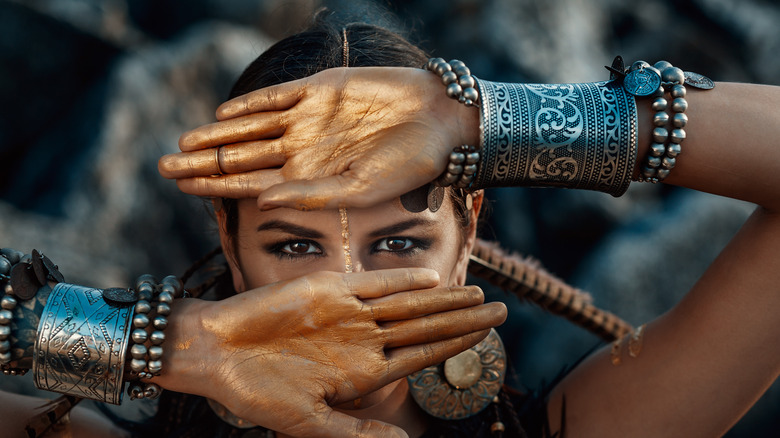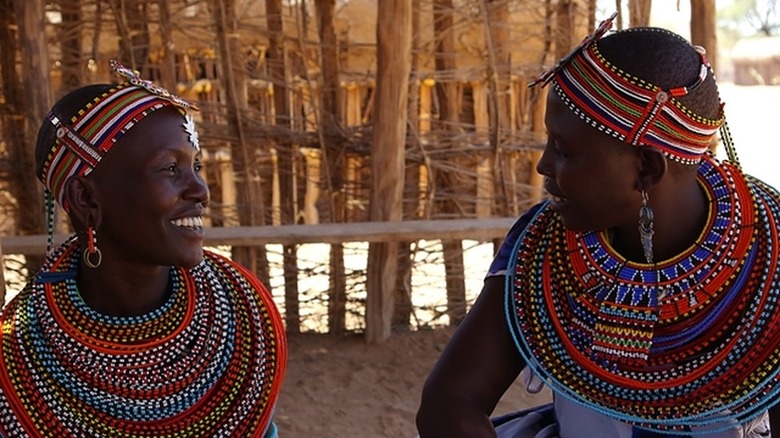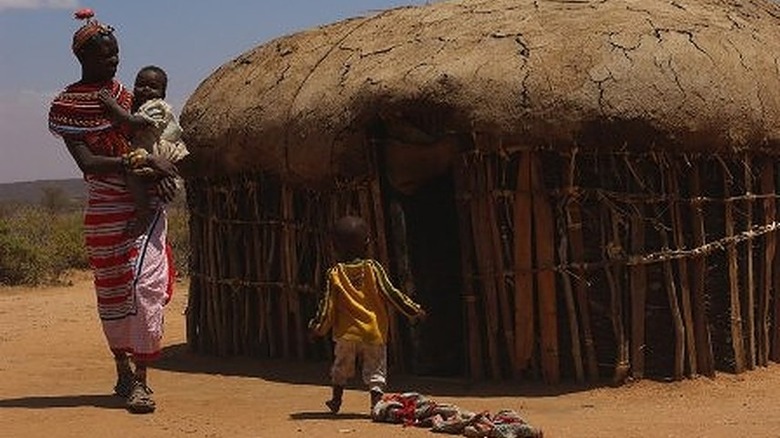Umoja Uaso: The Village Where Men Are Not Allowed
Matriarchal societies, where women hold the primary power, have existed in some form or another for thousands of years. These aren't necessarily societies where men are completely banned, though in some cases men are somewhat kept away or not allowed to make almost any important decisions.
Take, for example, the Mosuo, a small ethnic group living in China near the border with Tibet. With a total population of just under 40,000, the Mosuo are China's last matrilineal society, where property is passed through the female side of the family, women have moral authority and make important business decisions. Mosuo women never marry and instead participate in what's called "walking marriages," where a man lives in his own household and has no relationship at all with the children he produces, but will still visit his "wife" at night. Walking marriages can be monogamous, but are often not, so women are free to have as many partners as she wishes — but the man must always return to his own home in the early morning (via The Guardian).
True matriarchal societies, where men play a very small role or don't participate at all, are hard to find — both in modern times and in history. And some of these societies ended up this way more by chance than choice. In the isolated Estonian islands of Kihnu — sometimes known as the "Island of Women" — the community is run by women, as men usually work at sea and have very little say in everyday life (per BBC).
Ancient women-only villages are the stuff of legends
Perhaps the most famous women-only society was the one formed by the mythical Amazons, a nation of female warriors and hunters that are the subject of many ancient epic poems and legends, including Homer's Iliad. The Amazons would only interact with men to reproduce, only raising the daughters produced by the unions (via All That's Interesting). They were highly militarized, trained to use a bow and arrow and ride horses and be just as deadly as a man. They were strong, beautiful, powerful, and spirited. The Amazon didn't hate men — they just didn't need them (via National Geographic).
There are records of these fearless warriors in Roman and ancient Egyptian documents, and even biographers of Alexander the Great talk about them, according to All That's Interesting. But until somewhat recently, the Amazons were just that — a fascinating myth of Wonder Woman-like size. But historians are now wondering whether there's some truth behind the myth. The first glimpse that this could be the case was when in the 1990s a team of U.S.-Russian archaeologists discovered 2000-year-old graves of weapon-bearing warrior women near the Kazakhstan border. These women weren't the matriarchal Amazons — they were Sauromatian warriors that probably fought side-by-side with the men in their society. But they are, at the very least, proof that warrior women aren't just the stuff of myths (per Smithsonian Magazine).
Then in 2019, Russian archeologists found multiple generations of Scythian women buried together with an impressive golden headdress and bearing scars indicative of battle, as reported by Haaretz. They called them Amazons.
Modern women-only villages are born out of necessity
In modern times, women-only villages have been created in response to social issues or violence. This is the case of Umoja Uaso, a village in Kenya, founded in 1990 by Rebecca Lolosoli. A member of the Samburu tribe, Lolosoli was always an outspoken force for women's rights, especially against rape and forced marriages — something that wasn't much appreciated in her village. As a result, she was once beaten so severely by four men that she ended up in the hospital. Her husband — who had been away when this happened — chose not to defend her when he came back. Fearing for her life and future, Lolosoli invited 15 other women fleeing abuse and sexual violence to join her to create Umoja Uaso village as a safe haven (per The Guardian).
The village of Umoja — which means "unity" in Swahili — soon became a destination for women escaping domestic violence and child marriage. Women abandoned by their families and communities after being raped came here for support. And for the first time, mothers were able to protect their daughters from forced circumcision and send them to school. Today, several dozen women call the village home (via The Washington Post).
The village now also takes in runaways, orphans, and children with HIV. According to Lolosoli in an interview with Satya, "Men are forbidden to live in the village, but may visit as long as they behave and abide by the women's rules."
What's life in Umoja really like?
Women and children in Umoja Uaso live in traditional manyata huts built from a mixture of mud, tree branches, and cow dung. There are also two stone buildings in the village — one serves as a school for both children and women, and the other is a small museum on the history and traditions of the Samburu (via World Crunch).
The women work together to earn a living by selling traditional Samburu beadwork to the tourists who now stop by the village when visiting the nearby Samburu National Reserve (via The Washington Post). They now also own a small campsite near the safari area and offer tours of the village for a small fee (per The Guardian).
Until a few years ago, men from a neighboring village tried to sabotage Umoja Uaso by opening rival craft shops nearby and attacking the women living at Umoja. After some years, the women were able to buy the land where their village is located and the threats have become less common. Lolosoli — who has served as the village matriarch for years — says they can now focus on education and helping not only the women at Umoja but also the ones from neighboring villages learn about violence, discrimination, and abuse, according to The Guardian.



